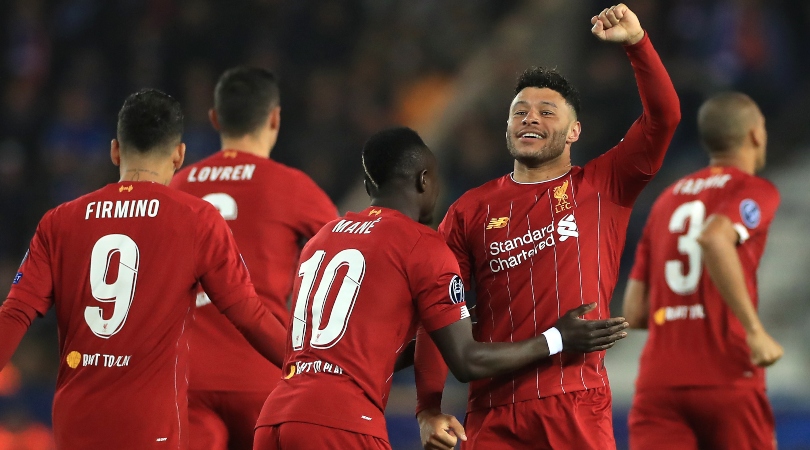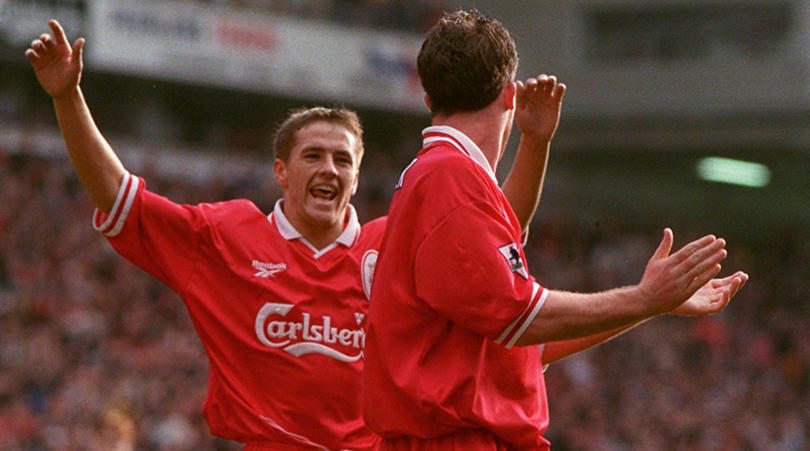How Jurgen Klopp has identified Liverpool's big weakness – and made them even better
If the Reds lacked anything last season, it was invention from midfield and more drive from the bench. Without a summer spending spree, how has Klopp dealt with that?

Last weekend, Liverpool eased into their game with Manchester United. It was shocking. Mainly because early surges of power have been one of this team’s great weapons and it was such a surprise to see that energy missing. But also because Manchester United had been wounded by their defeat to Newcastle. They were fragile and there for the taking.
So the mistake Liverpool made in those early minutes at Old Trafford was to be gentle. Perhaps there was a clever tactical explanation for why, but it did little more than allow United to feel better about themselves. A midfield which had been a neurotic mess calmed itself with easy possession. A defence which had been reconfigured – and had lost a man in the game’s warm-up – was also able to ease into its new shape. It was all much too easy and that first half served little purpose beyond the reinflation of United's ego.
We’ve seen this before with Liverpool: these strange, inexplicable lulls when their energy drains away. When they presented last season, they were often assumed to be derived from fear. When Liverpool drew with West Ham away, Everton at Goodison Park and then Leicester at Anfield, for instance, those were supposedly symptoms of their inability to cope with title pressure.
Maybe that was a part of it, but it was more likely a sign of their squad’s limitations. That was the obvious difference between them and Manchester City at the time, and it proved real enough; it was a clear disadvantage which would check their rhythm at critical moments and, ultimately, prove the difference between first and second place.
The cost of that lack of depth wasn’t in being unable to replace players who suffered injury or suspension, but rather the inability to shock the side awake whenever it drifted off. What Liverpool were noticeably without was the kind of enlivening squad player capable of altering the flow of energy within a game.
A story of sorts can be told by noting which players were used most often from the bench. Statistically in the Premier League, Klopp’s most frequently substitutes in 2018/19 were Daniel Sturridge (14), Xherdan Shaqiri (13), James Milner (12) and Jordan Henderson (11). For Manchester City: Leroy Sané, Riyad Mahrez and Gabriel Jesus.
With the possible exception of Shaqiri, who can be very thrusting in the right mood, introducing any one of those Liverpool players is a sideways move or a reaction to something the other team is doing. They're all capable and they each have their uses, but none of them possess the ability to quicken the speed of a game or increase the stress on an opponent. They can make Liverpool more solid and more resilient, but not more proactive. Not capable of doing more.
Get FourFourTwo Newsletter
The best features, fun and footballing quizzes, straight to your inbox every week.
That deficiency most affected the middle of the pitch, because supremacy in that area so often provides the platform for chance creation. Yes, Liverpool retain their gegenpressing threat, but it’s not nearly as pronounced as it was. Opponents have grown smarter; they’re not as naive to the threat of the high press. The implication is that the side has to draw its impetus from the two full-backs or from central positions. Those players stoke the embers, that attacking trio creates the fire.
Clearly, that emphasises the importance of the midfield – its strength, but also its dexterity. And that’s why Liverpool are so interesting this season.
Actually, it was the improved range which dug them out of that hole at Old Trafford. The starting players never really generated any rhythm, but Klopp had players available to him who were capable of shifting the game’s momentum by virtue of just being on the field. Adam Lallana’s goal, for instance, came from an off-the-ball run which, most likely, no other Liverpool midfielder would have made. Alex Oxlade-Chamberlain nearly won the game late on with his instinctive verticality, the threat of which alone seemed to compel Manchester United to drop deeper.
Klopp will want a fast start against Tottenham on Sunday. The lesson hopefully learned from last week is that vulnerable sides – which Spurs very much are – need to be killed off quickly. The intensity of the performance has to be ratcheted tight from the opening whistle, so that the mistakes and goals follow fairly easily.
But – and this has relevance well beyond Sunday – the evolution of this side means that Liverpool pack much more than just a couple of early haymakers. Oxlade-Chamberlain and Lallana are two reasons why, but a more settled Naby Keita – who really had an excellent game in Genk (famously not Gent) on Wednesday – is another. Together, they give Klopp far greater command of his side’s mood. He can attack their slumps now and purge their ennui with these more combustible elements.
He can offer variations which pose different attacking questions. He can rewire the functionality of his team in a way which offers more than just change for change’s sake. Liverpool are as good as they were last year, but they now - crucially - have the capability of being different in many more meaningful ways.
While you're here, why not take advantage of our brilliant subscribers' offer? Get the game's greatest stories and best journalism direct to your door for only £9.50 every quarter. Cheers!
NOW READ...
ANALYSIS The insider secret to how Liverpool fuel their intense Champions League away days
QUIZ Can you name the 51 all-time top scorers in the Champions League?
GUIDE Premier League live stream best VPN: how to watch every game from anywhere in the world
Seb Stafford-Bloor is a football writer at Tifo Football and member of the Football Writers' Association. He was formerly a regularly columnist for the FourFourTwo website, covering all aspects of the game, including tactical analysis, reaction pieces, longer-term trends and critiquing the increasingly shady business of football's financial side and authorities' decision-making.

